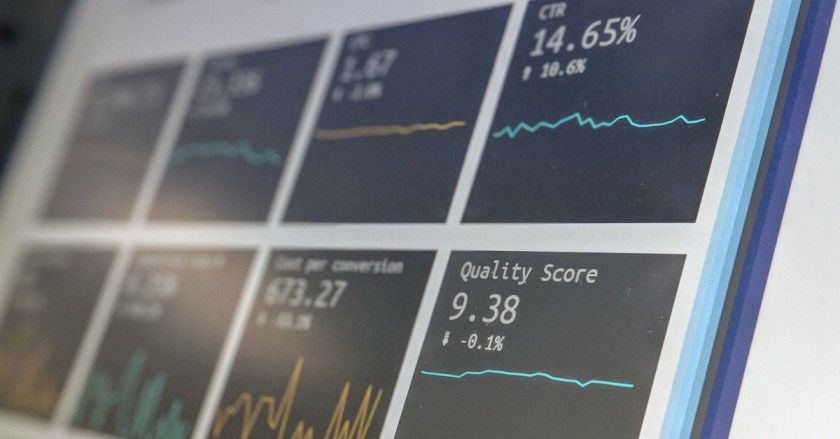What Is Ad Hoc Reporting?
With things moving too fast in modern business environments, it may be hard to predict the next 5 or 10 steps. That’s when ad hoc reports come in handy.

Oct 29 2019●7 min read

What Is Ad Hoc Reporting, and Why Is It so Useful?
“As the situation requires” – that’s the meaning of ‘ad-hoc’ in Latin. So, ad hoc reporting is any type of report that the user puts together themselves, as and when they need it, instead of using a predefined template. It’s a one-time report created for a specific purpose that helps the user to provide answers to important business questions immediately. It’s the creation of an autonomous report that omits the need to wait for standard analysis.
An ad hoc report may be a one-off query, a completely new report, or dashboard feature that the user can use whenever they need it, or a customized version of analytics the user has run before.
The point of ad hoc reporting is to build our own report the way we need it, depending on the situation. It works alongside recurring data reports and presents a crucial part of the growth and sustainability of any brand, business, or organization by providing a level of insight which offers an extra layer of success and substance to the data-driven decision-making process.
Ad-Hoc Reporting vs. Parameterized Reporting
Your business intelligence provider shouldn’t offer just parameterized reporting but true ad-hoc reporting as well, in order to avoid getting stuck. Parameterized reporting is a form of dashboard or report that is created every day, based on set parameters. However, a savvy marketing manager will probably come up with more questions after seeing the parameterized, daily report. In that case, you’ll need to create a new report specifically for that situation, called an ad-hoc report.
Do’s and Don’ts of True Ad Hoc Reporting
Today, ad hoc reporting is a vital process for improving performance, operations, and decision making in data-centric business. However, it’s crucial that you know how to create ad hoc reports in the right way. Creating them in the wrong way can do more harm than good for your business or organization.
Do’s of True Ad Hoc Reporting
- It should be agile – instead of waiting for IT to deliver new reports based on your requests, ad hoc reporting should provide reports ready for analysis as soon as possible.
- It should be versatile – depending on the user’s specific question, ad hoc reports can be created from scratch, or as a modified version of an already existing report related to the same question.
- It should be flexible – the data should be presented in a powerful visualization using funnel charts, heat maps, scatter plots, etc., so that users can easily navigate through it.
- It should be accessible – ad hoc reporting shouldn’t be limited to the user’s computer, but accessible to users anywhere and anytime as long as they have an internet connection. This means the reporting should be 100% web-based.
- It should empower all users – it should have a basic set of features for the non-tech-savvy users and a more advanced set of tools for tech-savvy users. Modern business intelligence should satisfy every user.
- It should be shareable – what’s a good ad hoc report without the ability to share it with your team for further interaction? A shareable ad hoc reporting provides efficiency and improves decision-making.
Don’ts of True Ad Hoc Reporting
Here’s what true ad hoc reporting shouldn’t be:
- It shouldn’t be created by developers if requested by users – this will cost the IT department valuable time which costs your business money. So, don’t put a strain on this department.
- Reports that aren’t in real-time – delivering reports over a few or more days when it comes to necessary solutions in business is futile. They should be delivered ASAP, in real-time, so that the business stays in the competition.
- Reports that are hard to understand – tabular presentation of data, such as Spreadsheets, makes it harder for the user to see trends or compare data, which limits the chance for analysis and discovery.
- One-dimensional reports – data reports shouldn’t be static because that will prevent users from drilling down and getting a more detailed focus on the data, resulting in losing insights. Remember, underlying data often hides the best solutions.
What Is Ad Hoc Data Analysis?
It’s the discovery and subsequent action you take after examining, exploring, and drawing real conclusions from an ad hoc report.
Usually, this analysis is more visual than the typical static report and includes discovering, presenting, and auctioning information for a smaller, targeted audience. It allows the user to decide which data sources to pull from and the way that data will be presented. Ad hoc analysis offers entirely customized analytics. It ensures true self-service reporting and better efficiency.
Benefits of Ad Hoc Reporting and Ad Hoc Analysis
After answering “what is ad hoc reporting?” “what it should be like?” and “what is ad hoc data analysis?” it’s time to look at the benefits of using these types of data reports. Here are some of the most significant benefits of ad-hoc reporting and ad-hoc analysis:
- Easy to use – they allow the user to uncover the right answers to the right questions quickly and without putting too much effort.
- Reduces IT workload – users don’t have to rely on the technical help of IT developers to create ad hoc reports. This saves time and money for the organization.
- Flexibility – ad hoc reporting allows users to follow the constantly changing business environment, as the business evolves and requires.
- Access to different data sources – this allows the report to give quick answers to current and future business questions.
To Sum Up
What is ad hoc reporting? It’s creating a unique report for a specific business purpose ASAP. It’s different than parameterized reporting, which delivers reports on a daily basis. However, you should know how to properly create it because doing it wrong can cause more harm than good for your business.

WRITTEN BY
Indrė Jankutė-CarmaciuIndrė is a copywriter at Whatagraph with extensive experience in search engine optimization and public relations. She holds a degree in International Relations, while her professional background includes different marketing and advertising niches. She manages to merge marketing strategy and public speaking while educating readers on how to automate their businesses.

